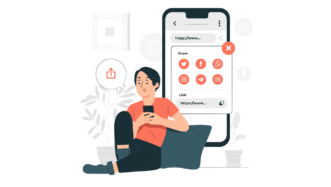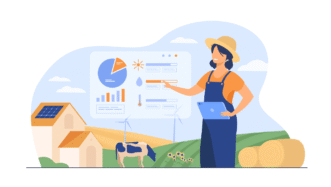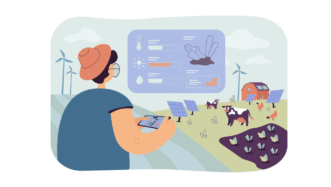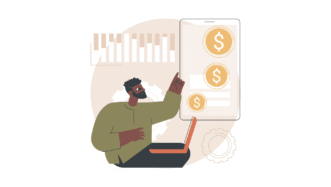LESSON OVERVIEW
In this lesson students learn expressions to talk about trends and watch a part of a video (4 min) about one of new buzzwords, i.e. NFTs.
C1 / Advanced75 minStandard LessonPremium Plan
VOCABULARY & VIDEO
At the beginning of the lesson, students have a short discussion about trends. Then, they read five sentences and guess the meaning of some of the words from the context (e.g. mind-boggling, whopping). After that, students rewrite some phrases using the provided words (e.g. have a massive success). They also decide which of the words from the previous exercise could be used to rewrite the phrases to create expressions to talk about trends. (e.g. be sold for an insane amount of money, have wild popularity). In the next task students need to read a short description of a trend and guess what it is about and then watch a part of the video to check their answers. The text is about NFTs so students also share what they know about NFTs. Finally, they watch the video again and tick the reasons for NFTs’ popularity.
EXPRESSIONS TO TALK ABOUT TRENDS
This part of the lesson starts with a discussion about NFTs as a trend and an investment opportunity. Next, students learn some more expressions to talk about trends (e.g. spread like wildfire, yesterday’s news). First, they complete seven statements with the words in a box. The activity is followed by a discussion about the trends mentioned in the statements (e.g. celebrity influencers, synthetic leather). After that, students look at the statements again and decide which of the phrases used before can be assigned to the ‘popular things’ category, and which to the ‘unpopular things’ one. Finally, students move on to describing trends in different areas of life, like work or entertainment. They also discuss the things which are not popular anymore.
Subscribe to unlock these and many other Standalone lesson with the Premium planWORKSHEETS












Great stuff, Olia. I’ll be using it this week. Thanks a million. Cheers!
Thank you for your comment! We hope your students enjoy the lesson too:)
Interesting topic but I find exercises 3 and 5 unclear, maybe I need more coffee…
Same…
I agree, the vocabulary exercises are not clear and slide 10 has a mistake (repeats the same sentence)
Apologies for that! It’s been fixed already.
We changed some of the instructions and split one vocab task to simplify it and avoid any confusion
Great lesson – I’m sure it will go over well. Just a note on ex. 3, I have reservations about “have a massive success”; with have, I believe it’s usually used as uncountable, and it sounds a bit off to me. In the video, success as a countable noun collocates with ‘be’. Valuable info for learners at C1 level. Keep up the good work!
Thank you! And thanks for bringing this phrase to our attention. It’s common to say “Company X have a (whopping/massive/…) success with their new product …” as the word ‘success’ can be used as a countable or uncountable noun without a significant distinction.
perfect topic. I have completed it with a video of johnny Harris about NFT for my English class with web developers. Thanks
We’re happy to hear you and your students liked it 🙂
Hi there, the video can’t be played it says this video is private
Hi! Thanks for your comment! We’re working on it 🙂
Hi! Just to let you know, we found a new video and updated the worksheet. We hope you enjoy it!
I bought this lesson a while ago, and now when I click on the video link in the PDF, it says “this video is private”. It’s another pdf with a problem like that 🙁
Hi! As the previous video disappeared, we had to find a new one and update the worksheet. We did that about a year ago. When you’re our subscriber, you can access the PDFs with the correct links.
I understand. Nevertheless, I paid for some of such lessons with video problems, so it’s not quite fair :/
We don’t sell individual lessons, but access to our lesson library which is constantly expanded and updated. Using our lessons without an active subscribtion is breaking our copyrights. PS You can’t watch a movie on Netflix without an active subscription, even though you watched it when you had one.
Thank you for stating that so clearly; it helps me avoid future disappointment.